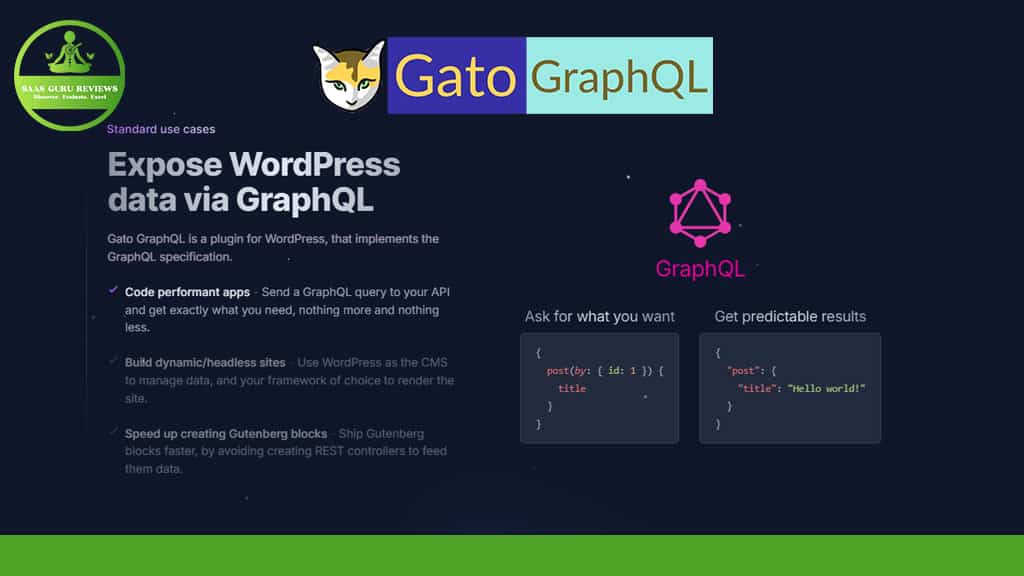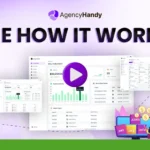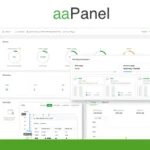In the ever-evolving landscape of web development, the need for efficient and flexible APIs is more crucial than ever. Enter Gato GraphQL, a powerful extension that enhances the capabilities of GraphQL servers, offering a robust alternative to traditional REST APIs. This article will delve into the intricacies of Gato GraphQL, providing insights into how it can transform your approach to API management. Whether you’re a seasoned developer or a newcomer to the field, this guide will equip you with the knowledge to leverage Gato GraphQL effectively.
Article Outline
-
Introduction to Gato GraphQL
- Overview of Gato GraphQL and its significance in modern web development.
- Information about the founder, Leonardo Losoviz, and the purchase of the domain in 2023.
- Link to the latest update and website traffic insights.
-
Understanding GraphQL vs. REST APIs
- Key differences between GraphQL and REST APIs.
- Advantages of using GraphQL over REST.
-
How to Use GraphQL Effectively
- Steps to implement GraphQL in your projects.
- Best practices for optimizing GraphQL queries.
-
Exploring the Gato GraphQL Plugin
- Features and benefits of the Gato GraphQL plugin.
- How it enhances the WordPress experience.
-
Exposing WordPress Data via GraphQL
- Techniques to expose WordPress data using GraphQL.
- Benefits of integrating GraphQL with WordPress.
-
Leveraging Power Extensions in Gato GraphQL
- Overview of power extensions and their applications.
- How extensions can enhance your GraphQL server capabilities.
-
Premium Extensions: Unlocking Advanced Features
- A look into premium extensions offered by Gato GraphQL.
- How these extensions can elevate your API functionality.
-
The Role of GitHub in Gato GraphQL Development
- How GitHub supports the development and collaboration for Gato GraphQL.
- Access to GitHub repositories and community contributions.
-
Building a Robust GraphQL Schema
- Steps to create a comprehensive GraphQL schema.
- Importance of schema design in API efficiency.
-
Future of Gato GraphQL: Roadmap and Innovations
- Insights into the future developments of Gato GraphQL.
- Link to the roadmap and pricing pages.
Introduction to Gato GraphQL
Gato GraphQL is a groundbreaking plugin designed to enhance the capabilities of GraphQL servers, offering an efficient alternative to REST APIs. Founded by Leonardo Losoviz, the Gato GraphQL domain was purchased in 2023, marking the beginning of a new era in API management. With a focus on flexibility and efficiency, Gato GraphQL empowers developers to execute queries with precision and speed. For more details, you can check the latest update and explore the website for comprehensive insights. According to the latest SEO tools, the website traffic stands at 2.98, reflecting its growing popularity among developers.
Understanding GraphQL vs. REST APIs
The debate between GraphQL and REST APIs has been ongoing, with each offering distinct advantages. GraphQL allows the client to request exactly what they need, reducing the amount of data transferred over the network. Unlike REST APIs, which require multiple endpoints for different data sets, GraphQL uses a single endpoint to fetch all required data. This flexibility makes GraphQL an attractive alternative to REST, especially for complex applications. By understanding the key differences, developers can make informed decisions about which API architecture best suits their needs.
How to Use GraphQL Effectively
Using GraphQL effectively requires a solid understanding of its query language and schema design. Start by defining your GraphQL schema, which outlines the types of data your API can return. Next, focus on optimizing your queries to ensure efficient data fetching. Utilize tools like persisted queries and caching to enhance performance. By following these best practices, you can harness the full potential of GraphQL in your projects.
Exploring the Gato GraphQL Plugin
The Gato GraphQL plugin is a powerful tool for WordPress developers, enabling seamless integration of GraphQL capabilities into WordPress sites. With features like custom endpoints and resolver functions, the plugin simplifies the process of exposing WordPress data via GraphQL. By leveraging the Gato GraphQL plugin, developers can create more dynamic and responsive WordPress applications.
Exposing WordPress Data via GraphQL
Exposing WordPress data via GraphQL involves setting up a GraphQL server and defining the necessary schema to access WordPress content. This integration allows developers to fetch data in a more structured and efficient manner compared to traditional REST APIs. The ability to execute multiple queries into a single request enhances performance, making it a preferred choice for modern WordPress development.
Leveraging Power Extensions in Gato GraphQL
Power extensions in Gato GraphQL provide additional functionalities that extend the capabilities of your GraphQL server. These extensions enable advanced features such as caching, custom directives, and enhanced security measures. By leveraging these power extensions, developers can create more robust and scalable APIs, tailored to their specific needs.
Premium Extensions: Unlocking Advanced Features
Gato GraphQL offers a range of premium extensions that unlock advanced features for developers. These extensions provide enhanced capabilities such as role-based access control, custom mutation handling, and advanced query optimization. By investing in premium extensions, developers can elevate their API functionality and deliver superior user experiences.
The Role of GitHub in Gato GraphQL Development
GitHub plays a crucial role in the development and collaboration of Gato GraphQL. It serves as a platform for developers to contribute to the project, share ideas, and access the latest updates. The Gato GraphQL GitHub repository is a valuable resource for developers looking to explore the plugin’s codebase and participate in its ongoing development.
Building a Robust GraphQL Schema
A well-designed GraphQL schema is the backbone of any successful GraphQL implementation. It defines the structure of your API and determines how data can be queried and manipulated. Focus on creating a comprehensive schema that encompasses all necessary data types and relationships. By investing in schema design, you ensure efficient and effective API operations.
Future of Gato GraphQL: Roadmap and Innovations
The future of Gato GraphQL is bright, with ongoing innovations and developments in the pipeline. The roadmap outlines upcoming features and enhancements that will further solidify Gato GraphQL’s position as a leader in the API space. By staying informed about the latest developments, developers can anticipate new opportunities to leverage Gato GraphQL in their projects. For more information, visit the roadmap and pricing pages.
Conclusion
- Gato GraphQL offers a powerful alternative to traditional REST APIs.
- Understanding the differences between GraphQL and REST is crucial for effective implementation.
- The Gato GraphQL plugin enhances WordPress integration and functionality.
- Leveraging power and premium extensions unlocks advanced features for developers.
- GitHub serves as a valuable platform for collaboration and development.
- A robust GraphQL schema is essential for efficient API operations.
- Stay informed about the future developments of Gato GraphQL through the roadmap.
For more information, please visit the Gato GraphQL website and explore their YouTube account for tutorials and updates.



